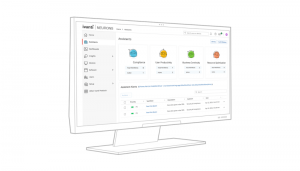MediaWatch: Can’t Get There From Here…
The demise of the old media appears to have slowed but it hasn’t gone away as the transition towards a digital business model continues to hold many challenges.
We still haven’t figured out how to transfer high quality old media to the digital platform. And that’s an astounding position. You would think that by now we would have come up with a solution to this problem.![]()
We still haven’t figured out how to produce high quality journalism on the economics of the digital business model. You really can’t get there from here, based on the economics of the digital platform.
Fairly successful new media sites such as Huffington Post still rely on the old media for much of their content, topped up with plenty of user generated content, and content bought in for very low payments.
That’s is not a sustainable business model that can be widely adopted by others, especially since it relies heavily on online advertising, which is a poor revenue generator.
I’ve long been an advocate of what I call the "Heinz 57" revenue model for media – multi-revenue streams that include advertising, subscriptions, lead generation, virtual currency, virtual goods, paywalls, etc. Except that managing a Heinz 57 business model is a huge headache. Publishers would rather go out for lunch with their top advertisers.
Frédéric Filloux, an experienced senior media executive, writing in Monday Note, Expanding Into New Territories documents the challenges for media companies such as newspapers.
…the most difficult part is finding the right combination of revenue streams. Advertising, pay-per-view, flat fee… All are part of the new spectrum media companies now have to deal with.
The gamut looks like this:
As an example of the huge challenges media companies face in moving to a digital business model, Mr Filloux estimates that revenues per reader fall by at least 60%.
His advice to media companies? Move into adjacent terratories:
… big media outlets endowed with strong brands should go into commodity news and participatory/social contents.
… news outlets retain large editorial staffs that could be harnessed to produce high value digital books
… the “Events” item, on the list/graph above, is more questionable, but it remains a significant source of potential income tied to the brand’s notoriety.
… close down a large part of the unsold inventory instead of sticking to the current method of dumping the dregs at a fraction of the prices achieved by premium space.
He also advises media companies to build paywalls but to be prepared for a large drop in readers, "The Times of London is said to have lost 90% of its audience."
It is all good advice but in my experience, established companies have great difficulty in switching business models. As Mr Filloux notes:
Expanding in new business territories doesn’t happen by itself. It will collide with management cultures that remain often ignorant of the technology and mores of the digital world. Money-losing media companies won’t be prone to invest in technologies needed for the turnaround…
Which is why for many media companies, "you can’t get there from here."
[Cross-posted at Silicon Valley Watcher]
A message from John Furrier, co-founder of SiliconANGLE:
Your vote of support is important to us and it helps us keep the content FREE.
One click below supports our mission to provide free, deep, and relevant content.
Join our community on YouTube
Join the community that includes more than 15,000 #CubeAlumni experts, including Amazon.com CEO Andy Jassy, Dell Technologies founder and CEO Michael Dell, Intel CEO Pat Gelsinger, and many more luminaries and experts.
THANK YOU













